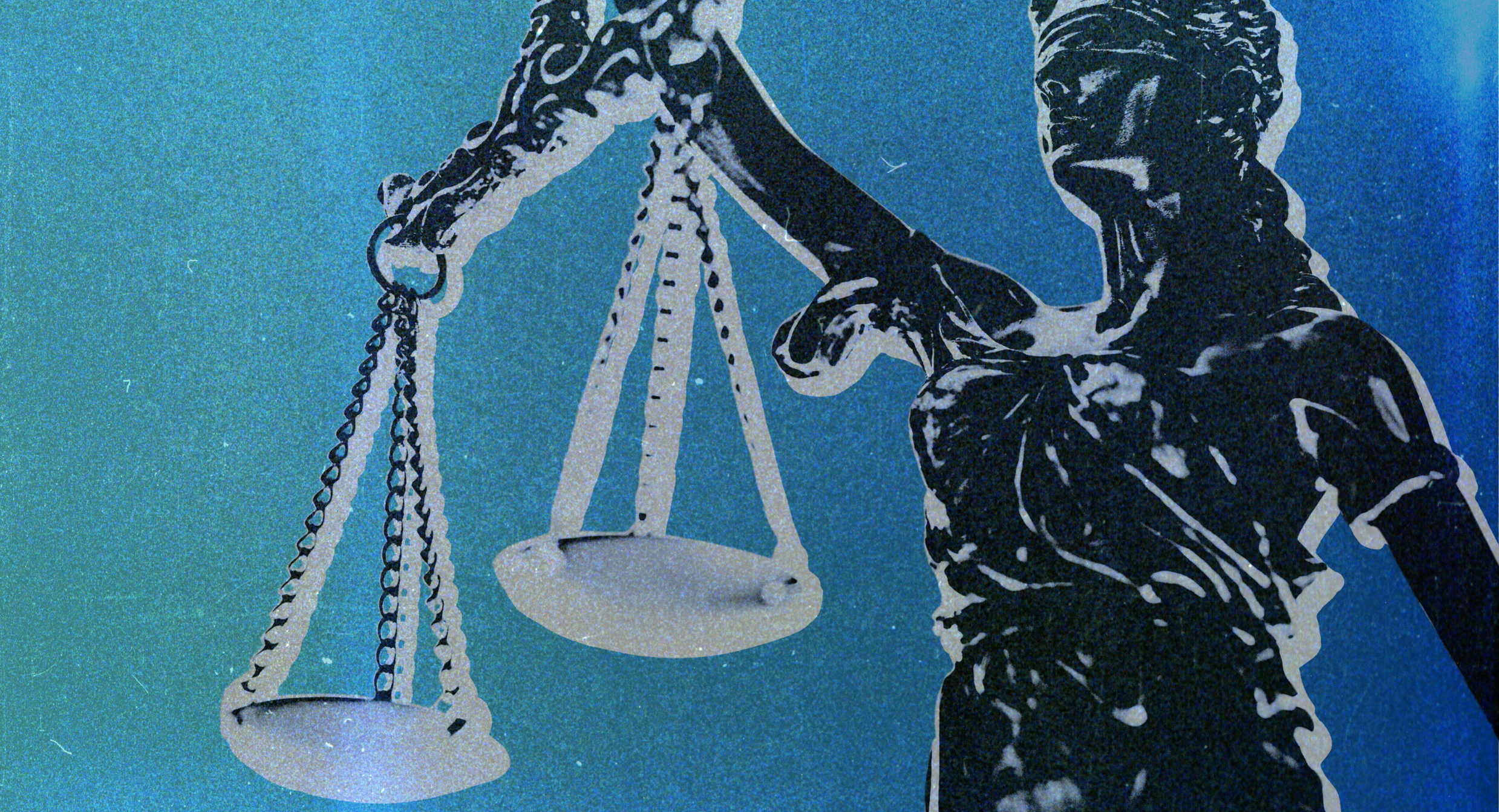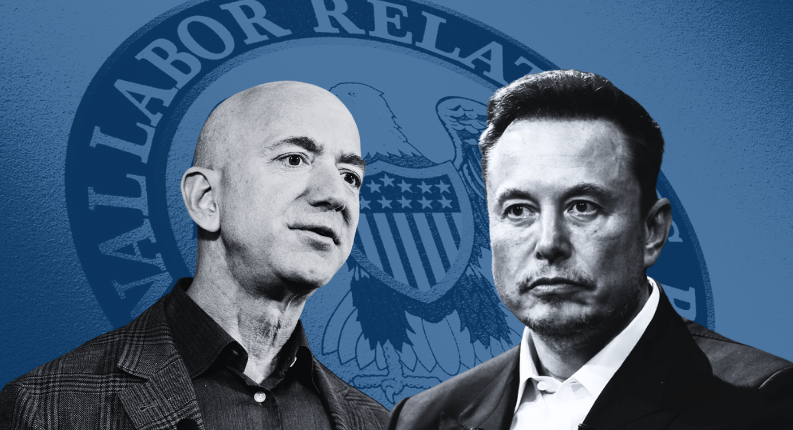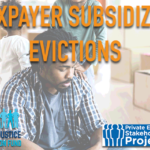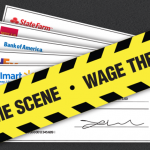The following is a list of tactics used by employers to prevent employees from voting for union representation. While most Americans would consider these tactics to be too intimidating to ensure that a fair election could be held, they were all found to be legal under the National Labor Relations Act. However, the Employee Free Choice Act will help workers bypass many of these tactics during the NLRB election process through majority sign-up, where an employer recognizes a union when the majority of employees demonstrate their desire to form one.
Employers have broad rights to anti-union “free speech”
Employers can:
- Predict but not threaten employees that voting for a union will result in the employees losing their jobs.1 Examples of these “predictions” found to be legal:
- “We are still a young company fighting for new business. If we have to bid higher or customers feel threatened because of delivery cancellations (union strikes) we lose business—and jobs…We will lose the flexibility we need to ship casting and beat the competition. We cannot stay healthy with union restrictions. We are much too small.”2
- An employer stated at a captive audience meeting that the plant was in poor financial health, that they needed to break even by year’s end, and that “I do not like more new problems.” The employer then followed up with a letter urging workers that a vote against the union would “put the company on the road to success.”3
- Tell employees that unions are linked to workplace violence, and then hire a security guard to patrol the workplace with a 100-pound Rottweiler, despite no actual security problem.4
- Tell employees that their personal relationships within the company will suffer if they vote for a union.5
- Misrepresent an employee’s rights under the law to get them to vote against the union.6
- Interrogate employees to find out whether or not they want union representation.7
- Tell employees that it knows the precise percentage of workers who support the union and knows that they have been to the union hall.8
- Circumvent the technical prohibition of conveying the futility of bargaining, the examples below illustrate the wide latitude they are still granted:
- “We have just as much right under the law to ask that wages and other employee benefits be reduced as the union would have to ask that they be increased.”9
- “Do you want to wait for years for a raise like those [union represented] people?”10
- “FACT: Only the Company can raise wages. All the Union can do is call a strike in an attempt to force the Company to do something.
- FACT: By striking, a union is gambling with its members’ future, hoping that it can shut off shipments to the employer’s customers to gain leverage in the negotiations.
- FACT: [the Respondent] is a member of the Royal Plastics Group. If our production is interrupted in Delmont, our customers can easily be supplied from other plants, both in the United States and Canada.
- FACT: Once negotiations start, all things are negotiable and wages and benefits can and often do go down because the union ‘trades them’ for other things like a union security or dues checkoff provision.”11
- Tell employees how a hypothetical employer can legally thwart its obligations to bargain in good faith by stalling negotiations with a union and “not really agreeing to anything.”12
Employers have extensive rights to suppress employee free speech
Employers can:
- Fire employees for discretely leaving captive audience meetings.13
- Fire employees who speak up during captive audience meetings when the employees had concertedly planned to voice union support.14
- Ban employees from asking questions during captive audience meetings.15
- Eject employees who speak up or ask questions in captive audience meetings after declaring that employee participation is banned.16
- Ban pro-union employees from attending captive audience meetings.17
- Conduct an anti-union campaign at a worksite while banning employees from discussing union organizing with their co-workers during working hours and in work areas.18
- Ban employees in the retail or health care sectors from discussing union representation in areas of the worksite that are open to the public, even when employees are off-duty.19
- Maintain work rules prohibiting “conduct which is or has the effect of…interfering with fellow Team Members.”20
Employers have wide access to employees to communicate anti-union messages
Employers can:
- Force workers to listen to their arguments against the union instead of carrying out job functions every day, or even every hour.21
- Hold as many captive audience meetings as it wants to during work hours (except for 24 hours before the election).22
- Have supervisors accompany employees on their driving routes and make anti-union comments.23
- Choose not to provide a union with a list of employees’ names and addresses until a few weeks before an election.24
- Have a supervisor and two company owners interrogate one employee about why he wants to form a union.25
- Have supervisors eavesdrop on employees’ off-duty conversations about unions and interrupt their conversations to make anti-union remarks.26
- Call all the employees into a manager’s office, in small groups of five to six, and tell them to vote against the union.27
- Ban union representatives from visiting the workplace to speak with employees or to distribute literature with very few exceptions.28
Employers can campaign against the union right up until employees vote
Employers can:
- Distribute anti-union campaign literature with employees’ paychecks the day before an election, depicting a factory they falsely wrote had closed due to a strike.29
- Have supervisors make anti-union remarks that are audible to employees standing in line to vote in a union election.30
- Hire off-duty police officers to patrol the workplace on the day of the election.31
- Have full access to speak to employees right up to the election when it takes place at the workplace, while banning union representatives from being at the site of the election.32
- Send “Vote No” text messages to employees less than 24 hours before the vote.33
- Send managers from individual employee to individual employee and tell them to vote against the union right up until the election is held.34
- Monitor employees as they enter and exit the election site, checking employees’ names off a list as they vote.35
- Offer to pay off-duty employees to come in to vote and force them to sign a roster.36
Erin Johansson, Senior Research Associate, American Rights at Work, December 2008.
Download this page as a PDF
1See NLRB vs. Gissel Packing Co., 395 U.S. 575 (1969). The Supreme Court ruled that an employer is free to predict the economic consequences it foresees from union representation as long as the prediction is based on objective facts outside of the employer’s control. But, see Crown Bolt, Inc., 343 NLRB 86 (2004), where the Board reversed Springs Industries, Inc., 332 NLRB 10 (2000), to hold that, while threats of plant closure are “very severe,” they do not inherently warrant setting aside an election.
2See Tri-Cast, Inc., 274 NLRB 377 (1985).
3See UAW v. NLRB, 834 F2d 816 (1987).
4See Quest International, 338 NLRB No. 123 (2003). After the workers petitioned for an NLRB election, the employer hired a security guard with a Rottweiler to patrol the plant at shift changes and brought in an additional off-duty police officer on election day. Although the employer had asserted to employees on multiple occasions that electing a union would create a violent workplace, the Board did not find the employers’ actions constituted coercion and grounds for overturning the election results.
5See Tri-Cast, Inc., 274 NLRB 377 (1985). The employer wrote a letter to its employees stating, “We have been able to work on an informal and person-to-person basis. If the union comes in this will change. We will have to run things by the book, with a stranger, and will not be able to handle personal requests as we have been doing.” The Board held the employer’s letter did not constitute an illegal threat since employers can assert that their relationship with employees will not be the same after they have union representation.
6See Tri-Cast, Inc., 274 NLRB 377 (1985). The employer wrote a letter to its employees stating, “We have been able to work on an informal and person-to-person basis. If the union comes in this will change. We will have to run things by the book, with a stranger, and will not be able to handle personal requests as we have been doing.” Even though the above statement is not true, the Board held that an employer can misrepresent an employee’s rights under the law, just as other types of misrepresentations are permissible.
7See NLRB v. Lorben Corp., 345 F.2d 346 (1965). An employer passed around a paper asking employees to check whether or not they wanted union representation. The court ruled that since there was no showing of hostility, the employer did not violate the law. Employer interrogation of employees as to their desire for union representation is not held to be coercive on its face.
8See Sunshine Piping, Inc., 350 NLRB No. 90 (2007) The Board held that a supervisor did not violate the law when he told two employees that he knew, and had told the company’s owner, that employees had “been to the union hall” and that “about 80 percent of the shop” had signed cards. As the dissent noted, “by professing to have precise, qualified knowledge of the percentage of employees who supported the union,” the supervisor was clearly conveying to them that their union activities were being closely watched.
9See Fern Terrace Lodge, 297 NLRB 8 (1989). The Board held that the employer was not implying the futility of electing the union when it made that statement.
10See Winkle Bus Company, Inc., 347 NLRB No. 108 (2006). The statement was made while the employee was reading an article about a nearby employer who refused to negotiate a contract with its newly-organized employees. The Board held that the manager’s statements did not convey futility, and that the manager was simply expressing her opinion on the presence of unions in the workplace.
11See Custom Window Extrusions, Inc., 314 NLRB No. 141 (1994).
12See Medieval Knights LLC, 350 NLRB No. 17 (2007). The employer hired anti-union consultants who told employees that, “an employer, by giving into lesser items or addendums on the contract, would be able to stall out the negotiations because they would still be bargaining in good faith but not really agreeing to anything…not really getting anything done.” The Board ruled that the statement was legal since it referred to a hypothetical company and did not describe the strategy of the employer.
13See Litton Sys., Inc., 173 NLRB 1024, 1030 (1968). The Board found the employer did not violate the law when it fired an employee for discretely leaving a captive audience meeting, affirming the administrative law judge’s holding that workers have “no statutorily protected right to leave a meeting which the employees were required by management to attend on company time and property to listen to management’s noncoercive antiunion speech designed to influence the outcome of a union election.”
14See J.P. Stevens & Co., Inc., 219 NLRB 850, 850 (1975). The employer fired 22 employees who asked questions during captive audience meetings. Because the employer banned questions at earlier meetings, the employees prepared some questions ahead of time. The Board found that the employer lawfully fired the employees since the employees had “a plan, however loosely formulated, to ask argumentative questions at [the employer’s] speeches.”
15See F.W. Woolworth Co., 251 N.L.R.B. 1111, 1113 (1980). The Board ruled that an employer may “attempt to further its antiunion campaign by conducting a captive audience meeting and by declaring that no questions would be answered in the course thereof.”
16See Hicks-Ponder Co, 168 NLRB 806, 814 (1967). The employer held a series of mandatory meetings with groups of employees. Supervisors made anti-union remarks throughout the meetings in an effort to suppress support for union representation. When several employees tried to make counter-arguments, they were told to remain silent, and some were later ejected from the meeting. The administrative law judge wrote, in an opinion affirmed by the Board, “Just as the [employer] would not have been free to infringe upon the Union’s legitimate use of its channels and means of communication, so employees acting on behalf of the Union were not free to impinge upon the legitimate and rightful use of the Employer in his use of his selected forum.”
17See Luxuray of New York, 185 N.L.R.B. 100, 101 (1970). Supervisors forced all employees to attend a series of captive audience meetings, with the exception of those known to be pro-union, who were forced to continue to work. The Board upheld the finding of the administrative law judge that while the employer “did its best to inhibit the free play of discussion,” it still acted within the confines of the law.
18See NLRB v. United Steelworkers, CIO (NuTone, Inc.), 357 US 357 (1958). The employer in one case prohibited employees from distributing literature or discussing the union on company property during work hours, while it distributed anti-union material and interrogated employees about their union activity. The employer in the second case verbally prohibited employees from organizing while it carried out its own anti-union campaign, which included interrogations and threats of plant closure. The Supreme Court ruled that the employer bans on union activity, despite their own anti-union campaigning, were legal.
19See Beth Israel Hosp. v. NLRB, 437 U.S. 483, 495 (1978), which upheld the hospital’s ban union organizing activity in “immediate patient care areas,” and Goldblatt Bros., 77 N.L.R.B. 1262, 1263 (1948), which upheld a ban on the retail store’s sales floor.
20See Palms Hotel and Casino, 344 NLRB 351 (2005). The Board upheld the company’s workrule, despite the dissent’s assertion that “an employee would reasonably construe the rule’s language as including protected activity, and would thus be chilled in his exercise of Section 7 rights.”
21See Blue Cross of Kansas City, Inc., etc., 259 NLRB 483 (1981). Prior to a union election, the employer repeatedly warned employees of the possible harmful consequences of voting for a union through captive audience meetings and leaflets titled, “Do Not Be Misled By Deceptive Simple Answers” and “Why You Should Vote No.” The Board stated that because the statements were not individually illegal, the cumulative effect of their repetition was also not illegal.
22See Hasbro Industries, Inc., 254 NLRB 587 (1981). In the two week period prior to the union election, the employer conducted a vigorous anti-union campaign. Two of the company’s vice presidents held a series of morning meetings with employees and then met with several employees individually, trying to convince them to reject union representation. The administrative law judge, whose decision was affirmed by the Board, held that the company “is entitled to campaign vigorously and sheer volume and intensity of the Company’s campaign does not amount to a violation of the Act.”
23See Frito-Lay, Inc. 341 NLRB No. 65 (2004). In the two months leading up to the decertification election, the employer sent managers and employees from its non-union facilities to “ride-along” with its truck-driver employees and discuss the upcoming election. The “ride-alongs” lasted 10-12 hours a day, with an average of three per driver during the pre-election period. One manager asked a driver if he would quit if the union was de-certified. The Board found the employer acted lawfully, citing Noah’s New York Bagels, 324 NLRB 266 (1997) and Emery Worldwide, 309 NLRB 185 (1992), which held that an employer’s use of ride-alongs to campaign against a union is not, in itself, coercive.
24See Excelsior Underwear Inc., 156 NLRB 1236 (1966). Before a union or pro-union employees can obtain the list of employees and their addresses, they must petition the NLRB with at least 30 percent of the unit supporting an election. After the NLRB orders an election, the employer has seven days before they must produce the contact list. Given the median time of 39 days between a petition and an election, that gives the union just a few weeks to contact all the employees before the election is held.
25See Rossmore House, 269 NLRB 1176, 1177 (1984). An employee who openly supported the union was approached by his supervisor who interrogated him about why we wanted a union. The supervisor told him “Well, as manager, I will have to fight it too.” Shortly after the two company owners interrogated the employee about why he wanted to form a union. The Board found that the interrogations were legal, and their decision was upheld in 760 F.2d 1006 (9th Cir. 1985).
26See Aladdin Gaming, 345 NLRB No. 41 (2005). On two occasions, supervisors listened in on private, lunchtime conversations between off-duty employees who were discussing forming a union. The supervisors interrupted the conversations to advise the employees against organizing, speaking against the union for two minutes in one case, and in the other case, the supervisor demanded to know what the employees were saying in Spanish. The Board held that the supervisors’ presence in the employee dining area was routine and did not constitute illegal surveillance. See also Airport 2000 Concessions, LLC, 346 NLRB No. 86 (2006). The Board ruled that a supervisor was not engaged in illegal surveillance when she interrupted a break time conversation between an employee and a union organizer after watching them for some time.
27See NVF, 210 NLRB 663 (1974). The employer’s general manager called nearly every employee into his office in groups of five to six to solicit their “no union” vote. The Board ruled that this practice was legal, asserting that the general manager’s office “had no special impact of awe upon the employees” since the employees were “familiar with this office since they had occasion to visit it to obtain loans from, or discuss grievance matters with, the general manager.”
28See NLRB v. Babcock & Wilcox Co., 351 U.S. 105, 112 (1956). The Supreme Court held that an employer can prohibit nonemployees from distributing literature on company property as long as there exists other means of communicating with employees. In Lechmere, Inc. v. NLRB, 112 S. Ct. 841 (1992), the Supreme Court held that only in the most remote sites, such as logging camps or mountain resorts, would employers be compelled to allow union representatives to visit their property.
29See Midland National Life Insurance Co., 263 NLRB 127 (1982). The employer distributed the campaign literature with the false statement the day before the election, and the union had only four hours to respond with the facts. The union lost the 107 to 107 vote. The Board held that the NLRB was not required to review these materials, which it did not deem to be extremely deceptive, and argued that employees would clearly read the materials as “clearly employer propaganda.”
30See Longs Drug Stores California, Inc., 347 NLRB No. 45 (2006). The day of the election, management told lead employees to stand by the voting lines to make sure the election was running smoothly. While watching over the employees in line, the lead employees spoke for 20 minutes, disparaging the union and suggesting employees vote “no” in voices audible to those standing in line. The Board found that the lead employees’ statements were not illegal since they were not made during a conversation with the employees waiting in line.
31See Quest International, 338 NLRB No. 123 (2003).
32See Phillips Chrysler Plymouth, Inc., 304 NLRB No. 7 (1991). The Board overturned the workers’ vote for union representation because just prior to the election, union organizers refused to leave the worksite where the election was taking place after the employer ordered them to. The Board argued that “The message undoubtedly conveyed to employees by the union agents’ conduct was that the Employer was powerless to protect its own legal rights in a confrontation with the Union.”
33See Virginia Concrete Corp., 338 NLRB No. 183 (2003). The Board upheld an election where the employer sent a mass “Vote No” text message to mobile data units in employees’ trucks, finding that the action did not violate the Peerless Plywood 24-hour moratorium on campaigning to “massed assemblies of employees.”
34See Peerless Plywood 107 NLRB 427 (1953). The Board found the employer’s anti-union speech to a group of employees coercive because of the “mass psychology” of the group, and announced a prohibition of “election speeches on company time to massed assemblies of employees” within the twenty-four hours preceding an election. Under this rule, employers can still campaign within the last twenty-four hours before an election, even addressing every employee individually, as long as they don’t hold captive audience meetings.
35See American Nuclear Resources, Inc., 300 NLRB No. 62 (1990). The Board upheld an election where one company supervisor checked off the names of employees on a list as they entered the employer’s van to ride to the polls, and another checked off their names as the employees entered the employer’s facility housing the polls. The Board argued that the employees at this plant were accustomed to being monitored, and that listkeeping was a “normal security procedure.”
36See Red Lion, 301 NLRB 33 (1991). The Board held that when the employer offered to pay off-duty employees to come in to vote, and made them sign a roster, it did not constitute vote buying or surveillance.






